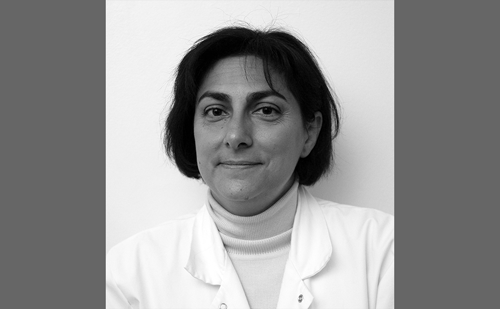With an ageing population, it is commonplace for vitreoretinal (VR) surgeons to encounter patients on oral anticoagulation and antiplatelets, including dual oral antiplatelet therapy. Some VR surgeons routinely stop warfarin, aspirin or clopidogrel, a thienopyridine adenosine diphosphate (ADP) antagonist, prior to VR procedures on the assumption that they increase the risk of bleeding and may adversely affect surgical outcome. While the risk of a sightthreatening peri-operative haemorrhage associated with continuation of therapy is of immediate concern to the surgeon, the risk of a lifethreatening thromboembolic event from discontinuation of therapy is no less real for the patient. There are no substantial guidelines and no current consensus regarding the peri-operative management of anticoagulation or antiplatelet therapy of patients undergoing VR surgery. Therefore, the onus falls on the surgeon to weigh up the risks, consult with the physician involved in the care of antithrombotic therapy and discuss the decision with the patient.
Current Practice
A recent electronic survey of 142 VR surgeons by the British and Eire Association of Vitreoretinal Surgeons (BEAVRS) (unpublished data presented at the Royal College of Ophthalmologists Congress, Liverpool, 2008) revealed that 64% of the 67 respondents did not stop warfarin, while 14% routinely stopped warfarin prior to VR surgery; 30% would stop warfarin except in high-risk cases, such as artificial valve, recent pulmonary emboli and stroke. Of those who stopped warfarin, 75% did not use any form of replacement therapy and 25% would use lowmolecular- weight heparin (LMWH), of whom 8% would use intravenous (IV) heparin as replacement therapy if the international normalised ratio (INR) fell below the therapeutic level in cases of valve replacement. The majority of surgeons (77%) were happy undertaking VR procedures with an INR of 2–3.5, 6% would prefer an INR of 1–1.9 while 16% would still operate with an INR ≥3.5. Thirty-two per cent of respondents would stop antiplatelet agents such as aspirin and clopidogrel prior to surgery, a quarter of whom (8%) would stop clopidogrel in patients on combined aspirin and clopidogrel therapy. Clearly, there is a wide variability in practice, reflecting individual surgeon preferences and controversies surrounding the matter.
Indications for Antithrombotic Therapy
Warfarin is indicated in a variety of potentially life-threatening medical conditions including atrial fibrillation (AF), valvular heart disease, prosthetic valves, ischaemic heart disease, recurrent venous thromboembolism and hypercoagulable states.1–4 For patients with AF, deep-vein thrombosis (DVT), stroke, myocardial infarction (MI) or bioprosthetic valves, an INR between 2 and 3 has been found to decrease the risk of thromboembolic events while minimising adverse events from anticoagulation. The therapeutic goal for patients with mechanical valves, recurrent thromboembolism and lupus anticoagulant is typically 3.0–3.5.5
In 17,187 cases of suspected MI the efficacy of aspirin in reducing vascular mortality was proved (odds reduction 23%) in the Second International Study of Infarct Survival (ISIS-2).6 This effect was demonstrated across the spectrum of patients at high risk of vascular events in the Antiplatelet Trialists’ collaborative meta-analysis7 of 287 studies involving 212,000 patients, which found a 25% reduction in the combined end-point of MI, stroke and vascular death in users of antiplatelet therapy.
Clopidogrel has been in widespread use since it was approved in 1998 for secondary prevention of atherothrombotic events8 following the Clopidogrel versus Aspirin in Patients at Risk of Ischaemic Events (CAPRIE)9 trial, in which it demonstrated moderate benefit over aspirin at reducing vascular events. Using this agent in combination with aspirin in the Clopidogrel in Unstable angina to prevent Recurrent ischemic Events (CURE) trial,10 the Clopidogrel as Adjunctive Reperfusion Therapy (CLARITY)11 trial and Clopidogrel and Metoprolol in Myocardial Infarction Trial (COMMIT),12 dual oral antiplatelet therapy provided significant benefits in patients across the spectrum of acute coronary syndromes (ACS). Dual antiplatelet therapy is also recommended in patients undergoing intracoronary artery stenting to prevent the potentially devastating complications of stent thrombosis, especially for drug-eluting stents (DES), where treatment is recommended for 12 months.13
Evidence for Continuation or Cessation of Antithrombotic Therapy in Vitreoretinal Surgery
Although there was some controversy in earlier series as to whether warfarin and aspirin increase the risk of haemorrhage in intraocular surgery,14 there was no compelling evidence to support the cessation of anticoagulation prior to surgery.15–17 In fact, recent evidence suggests that it is safe to continue anticoagulation during VR procedures.18,19
Narendran and Williamson14 examined a series of 541 consecutive patients undergoing VR surgery, 60 of whom were on aspirin and seven of whom were on warfarin. One of 11 choroidal haemorrhages was on warfarin and one of nine rebleeds for diabetic vitrectomy was on warfarin. They concluded that aspirin has no effect on bleeding, but warfarin was associated with bleeding complications, so it is recommended that warfarin be stopped if the patient’s risk profile is low.
In a series of 50 ophthalmic procedures, McCormack15 et al. found no significant ocular haemorrhagic complications in the eight patients undergoing VR surgery and recommended that surgery can be safely performed while the patient is therapeutically anticoagulated. Saitoh et al.16 described four patients undergoing vitrectomy and three undergoing scleral buckling in a large series of anterior segment surgery. They concluded that discontinuing anticoagulation was unnecessary for patients with life-threatening conditions. Gainey et al.17 reviewed 50 patients undergoing ocular surgery on warfarin therapy, six of whom had VR surgery, and found no significant difference in haemorrhagic complications among patients in whom warfarin was continued and those in who it was discontinued.
Dayani et al.18 reviewed 1,737 consecutive patients undergoing pars plana vitrectomy (PPV) and selected 54 patients undergoing 57 procedures while on warfarin therapy; they found no introperative haemorrhagic complications. Four eyes (7%) experienced postoperative haemorrhage that resolved spontaneously without visual sequelae or need for supplemental surgery. Two of these eyes were in the subtherapeutic group (INR 1.2–1.49) and two were in the high therapeutic group (INR 2.5), with three of the four patients having vitrectomy for proliferative diabetic retinopathy (PDR) with vitreous haemorrhage. They suggested that patients may safely undergo VR procedures while maintaining their therapeutic levels of anticoagulation.
Fu et al.19 reviewed 25 patients receiving warfarin with INR ranging from 1.5 to 3.1 while undergoing VR procedures. No intraoperative complication occurred apart from one patient who had an intraoperative subretinal haemorrhage associated with scleral buckling and external drainage procedure. They concluded that successful visual and anatomical results may be achieved after VR surgery for patients receiving anticoagulation with warfarin without cessation of therapy.
In both the Minimally Classic/Occult Trial of the Anti-Vascular endothelial growth factor (VEGF) Antibody Ranibizumab in the Treatment of Neovascular AMD (MARINA) and Anti-VEGF Antibody for the Treatment of Predominantly Classic Choroidal Neovascularization in AMD (ANCHOR) phase III trials, anticoagulation was not stopped. Over two years, no ocular bleeding diathesis was encountered in an overall average total of 1,852 intravitreal ranibizumab injections given to 105 subjects on warfarin. This suggests that an intraocular injection in a patient on warfarin is unlikely to cause ocular haemorrhage.20
There have been small case series suggesting that aspirin and clopidogrel in combination can result in an increased bleeding tendency.21–23 Flaxel21 reported a case of suprachoroidal haemorrhage, vitreous haemorrhage and hyphaema resulting from complicated cataract extraction requiring anterior vitrectomy and iridectomy. Herbert et al.22 described a series of four patients on combination of clopidogrel and aspirin or non-steroidal anti-inflammatory agents (NSAIDs) three of whom developed spontaneous vitreous haemorrhage requiring surgery and one developed persistent haemorrhage and redetachment following vitrectomy and retinectomy.
Kallio et al.24 studied the risk of haemorrhagic complications related to ocular anaesthesia. In a series of 1,383 patients undergoing intraocular surgery, 76 patients were receiving warfarin. This study showed no predispostion to haemorrhage with either retrobulbar or peri-bulbar anaesthesia.
Risk of Stopping Antithrombotic Therapy
In a survey by Stone et al.25 of 100 cataract surgeons who discontinued warfarin treatment before cataract surgery, six patients had acute strokes, two of which led to death, in addition to one patient who had a DVT and another who had a pulmonary embolus. In a survey of 57 physicians who discontinued anticoagulant therapy in the pre-operative period, Kapusta and Lopez26 found that one patient had a stroke and eight others had peripheral thrombosis. In a survey of 504 members of the American College of Mohs Micrographic Surgery and Cutaneous Oncology, 168 responding physicians reported 46 patients who experienced thrombotic events when their aspirin or warfarin therapy was perioperatively withheld, with 54% experiencing the event when warfarin was withheld and 39% when aspirin was discontinued. Thrombotic events included 24 strokes, three cerebral emboli, five MIs, eight transient ischaemic attacks (TIAs), three DVTs, two pulmonary emboli and one retinal artery occlusion leading to blindness. Three deaths were reported.27 Several other series have also reported life-threatening thromboembolic events that have been related temporally to the peri-operative discontinuation of both aspirin and warfarin.28–31
Cessation of oral anticoagulation has been noted to cause a paradoxical state of hypercoagulability secondary to rebound effect, postulated to be related to interruption of the equilibrium between vitamin-K-dependent factors and proteins C and S.32–34 Similarly, the surgical milieu has been found to induce a hypercoagulable state including increased levels of plasminogen-activator inhibitor 1.35,36 Therefore, the necessity of stopping anticoagulation for surgery with an inherently low haemorrhagic risk is questionable.
Recent reports have shown that in patients with CAD, premature withdrawal of antiplatelet agents may lead to an increased rate of recurrence of events. Interruption of dual-platelet therapy soon after stent implantation increases the risk of acute stent thrombosis, with mortality varying from 15 to 45% in the first month. In addition, interruption of antiplatelet agents long after implantation of DES may expose the patients to late stent thrombosis. Similarly, interruption of dual antiplatelet treatment soon after the acute phase of non-ST elevation acute coronary syndromes (NSTE-ACS) may expose patients to a high risk of recurrent events, even in non-stented patients.37 There have even been case reports, albeit few, resulting in death from stent thrombosis shortly after interruption of combined therapy for elective surgery.38,39
Important Considerations
Risk of Haemorrhagic Complications
The majority of VR procedures can be safely performed without altering the patient’s antithrombotic regime. However, in cases of complex delaminations, surgery to vascular lesions, scleral buckling or external drainage procedures, some surgeons may still prefer to modify warfarin or antiplatelet therapy. It is important in the historytaking to elicit concomitant usage of over-the-counter medications such as NSAIDs for analgesia or herbal remedies, which may potentiate the blood-thinning effects of prescribed medications, causing increased bleeding tendencies.22
Thromboembolic Risk Profile
The indications for antithrombotic therapy and the patient risk profile must be carefully assessed before initiating modification of reatment regimes. For low-risk patients, such as non-valvular AF, DVT after three months without risk factors or cardiomyopathy without AF, stopping warfarin for several days prior to surgery to decrease the INR to low therapeutic levels may be acceptable. In high-risk patients, such as those with hypercoagulable states, mechanical valves or AF with history of recent thromboembolic events who cannot afford to have their INR fall below a therapeutic range of 2.5–3.5, bridging therapy with IV heparin or LMWH may be necessary. Patients requiring IV heparin will need to be preoperatively admitted for close monitoring of the activated partial thromboplastin time (APTT) and INR level and post-operatively during re-initiation of anticoagulation. This is often a complicated process and may prove difficult in the setting of day case VR surgery.
Period of Treatment and Timing of Surgery
The European Society of Cardiology (ESC) guidelines37 recommend against the temporary interruption of dual antiplatelet therapy (aspirin and clopidogrel) within the first 12 months after the initial acute coronary ischaemic episode, and discourages prolonged withdrawal of either aspirin or clopidogrel or both unless clinically indicated. In stable patients who have undergone stent placements, clopidogrel should be continued for three to four weeks after bare-metal stents (BMS) and for six to 12 months after DES. If interruption of antiplatelet therapy becomes mandatory, such as in brain or spinal surgery, no alternative therapy with proven efficacy can be proposed as a substitute. In cases of elective VR surgery, it may be an option to postpone surgery until the critical period of treatment has been completed to avoid premature interruption of dual therapy.40
Communication
The decision for continuation or cessation of warfarin or antiplatelets must be clearly communicated to the patient, his or her physician and other staff involved in the care of the patient. Often, when they are unclear on the surgeon’s preference, patients may take the initiative to stop or be advised to stop antithrombotic therapy pre-operatively even when this is not requested by the surgeon. If the surgeon initiates the cessation of warfarin or antiplatelet therapy, it is imperative to ensure that the patient knows when to re-start treatment post-operatively to avoid undue delay. Given the systemic risks, this is a point that no-one can afford to overlook.
The Future
With the advent of newer surgical techniques such as 23 and 25G transconjunctival sutureless vitrectomies, topical anaesthesia and intravitreal anti-VEGF as pre-operative adjunct in complex diabetic delamination and vitrectomy procedures, potential haemorrhagic risks associated with VR surgery are further decreased, allowing an equally favourable surgical outcome without cessation of medically necessary anticoagulation or antiplatelet therapy. However, novel oral anticoagulants such as direct thrombin41 or factor Xa inhibitors42 and more potent antiplatelet agents43 currently in development may pose a new challenge.
Conclusion
Current evidence provides a compelling argument for maintenance of anticoagulation and antiplatelet therapy during VR surgery. If required in selected cases, modification of anticoagulation or antiplatelet therapy must be undertaken in conjunction with the patient’s physician to allow full comprehension of the systemic thromboembolic risks and ensure safe peri-operative management of antithrombotic therapy.







